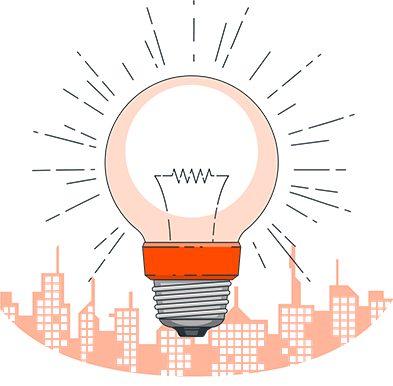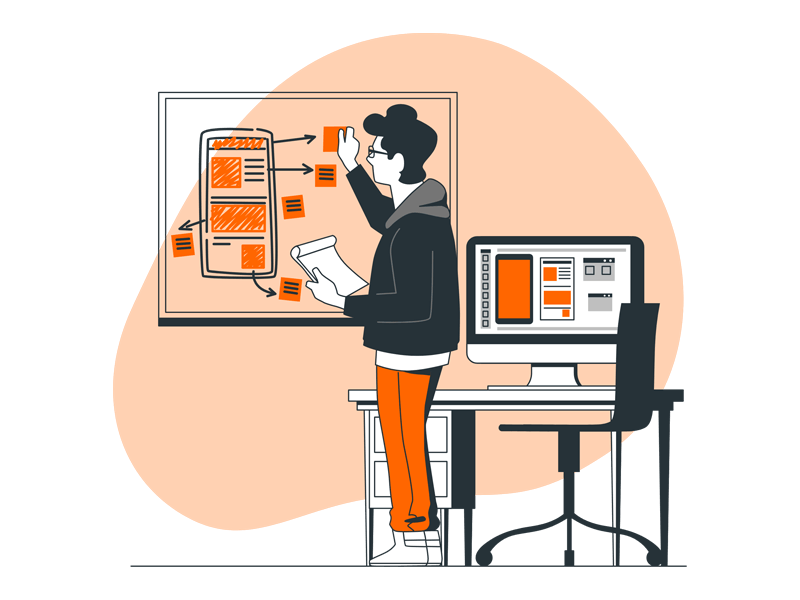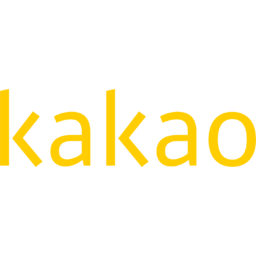Introduction to UI/UX Design
Have you ever thought about how a website or app is designed to provide an engaging and user-friendly experience? That’s the magic of UI/UX design! In today’s digital world, where more and more businesses are shifting online, having a good UI/UX design is paramount for success.
Definition of UI/UX design
For those new to the tech world, UI stands for User Interface, while UX means User Experience. Essentially, UI/UX design is the process of creating visually appealing and intuitive interfaces that are easy to use and navigate. Whether it’s a website, mobile app or software, ensuring that users have an enjoyable experience is crucial.
Explanation of why it’s an important career in tech
As per Glassdoor, UX Designers carry the #2 spot on their Best Jobs in America list for 2021, with over 3k job openings and a median base salary of $105k/year. The fact that demand for qualified UI/UX designers is consistently growing proves the significance of this field in the tech industry. As companies continue to invest in technology to stay competitive, they need professionals who can create designs that cater to their target audience.
Having a well-trained UI/UX designer can be a big success factor for a business in today’s world.
Brief overview of skills required
UI/UX designers need to be proficient in various skill sets like research analysis, visual design, prototyping, coding, and communication to effectively serve as the bridge between product owners and developers. An understanding of human-computer interaction (HCI) is also essential to create designs that capture the user’s attention and encourage engagement. Alongside technical expertise, significant emphasis has been put on soft skills such as problem-solving, adaptability, teamwork, creativity, and critical thinking since these traits will enable them to design with empathy for their target audience.
Overall, Ui/UX design presents an exciting and profitable career opportunity in the tech space, but only those willing to invest time into acquiring knowledge and upskilling themselves will be able to make the most out of this chance.
Skills Required
Aspiring UI/UX designers can attest to the fact that the job requires a unique set of skills and knowledge. In order to break into this lucrative career field, there are certain tools in your toolbox you cannot do without. Let’s dive into some crucial knowledge areas employers expect you to have.
Strong knowledge of design principles and visual communication
UI/UX design is all about creating visually appealing digital products that captivate users while being functional. A top-notch understanding of design principles and visual communication will go a long way in cementing your position as a revered designer. According to statistics from Dribble, 92% of people judge websites based on their visual appeal, which reiterates the importance of having a strong eye for design.
Proficiency in design tools such as Sketch, Adobe XD, or Figma
Having an excellent grasp on design software used in the industry is fundamental and necessary. Professionals should consider investing time honing their skills with popular design tools such as Sketch, Adobe XD, and Figma, ensuring they stay ahead of the game. Indeed validates this notion by stating that proficiency using these creative platforms is one of the most in-demand technical skills in UI/UX design roles.
Understanding of user-centered design and user research methods
While designing stunning-looking products is essential, user satisfaction is critical in the world of design. Understanding the fundamentals of user-centered design (UCD) will be invaluable as it is a hallmark principle of designing meaningful user experiences. As designer Don Norman says, “Design must be grounded in an understanding of the users — their needs, their wants, their capabilities, and their environments.” This means knowing how to conduct user research to develop appropriate designs for different categories of users.
Knowledge of front-end web development (HTML, CSS, JavaScript)
Knowing HTML, CSS, and Javascript are not confined to just web developers; UI/UX designers also require some level of familiarity with them. Basic competencies in programming languages help build interfaces according to specific guidelines and give pros greater control over every aspect of the product.
Familiarity with usability testing and prototyping tools
After concluding a design project, professionals need to test it widely before pushing it live. Familiarity with various prototyping tools such as InVision Studio, Marvel App, or Axure RP is crucial at this stage. Similarly, usability testing enables designers to detect areas where end-users struggle when using the digital products designed. Knowing how to use software like UserTesting.com will undoubtedly enhance creators’ overall productivity and creativity by helping fine-tune their digital outputs.
In summary, success as an aspiring UI/UX designer requires mastery of several foundational skills. The more complete your portfolio becomes through learning new technical abilities repeatedly, the higher your value on the market.
Responsibilities
As a UI/UX Designer, you will be responsible for numerous tasks that revolve around understanding user needs and creating compelling experiences that meet those needs while keeping up with current trends in the industry.
Collaborating with stakeholders to define user requirements and design goals
Working closely with stakeholders is essential to gain a thorough understanding of business requirements and target users. This step involves conducting stakeholder interviews to understand their vision and aligning it with the end-users’ perspective. According to BLS data, there are about 281,500 graphic designers and about 47,300 industrial designers employed in 2019. Therefore, it is crucial to collaborate effectively to create designs that resonate with end-users and achieve business goals.
Creating wireframes, prototypes, and visual designs that meet user needs
In the process of designing a user interface or experience, creating low fidelity (wireframe) and high-fidelity (prototyping) versions allow for feedback at different stages of the design process. This iterative approach helps validate ideas faster, refine details, and avoid errors before development starts. Keeping in mind usability standards and guidelines from organizations such as Nielsen Norman Group will improve the likelihood of user satisfaction with the final product.
Conducting user research and usability testing to validate design decisions
Validating design decisions through user-centered methods like surveys, usability tests, or eye-tracking studies ensures that your work meets the users’ expectations while minimizing costly mistakes later on. In 2020, 64% of shoppers say customer experience is more important than price, indicating that investing time in validating design can benefit businesses. By involving users early on, you can identify potential issues early in the design phase and have a better chance of delivering an experience that satisfies their needs.
Communicating design decisions to developers and other stakeholders
Once the designs are complete, handing them off to developers for implementation requires concise communication. Documenting design specifications, providing sketches for specific elements, and explaining interaction details ensure proper handoff and reduce the risk of misinterpretation. Considering software development trends like DevOps, where cross-functional teams work hand-in-hand helps maintain collaboration between designers, developers, project managers, and other team members.
Staying up-to-date with industry trends and best practices
Finally, staying updated with UI/UX industry trends equips you with tools that drive innovation, inspiration, and diverse perspectives. Attending conferences, seminars, following online communities or publications like “Smashing Magazine,” “A List Apart” gives first-hand insights into the ever-changing tech industry’s evolution.
In conclusion, UI/UX roles require excellent communication skills, attention to detail, creativity and stay on top of the latest design techniques available. Being proficient in various tools like Sketch, Adobe Creative Suite would help you master this skillset. However, always remember when designing that ultimately it is about understanding user needs; thus being empathetic towards users goes a long way in creating compelling User Experiences that we all desire.
Salaries
When it comes to pursuing a career in UI/UX design, one of the top considerations for most individuals is salary. How much can you expect to earn as a UI/UX designer? There are various factors that impact a designer’s earning potential, including location, experience, and company size.
Average Salaries for UI/UX Designers
According to Glassdoor, the average salary for a UX Designer in the United States is $85,277 per year. However, this number can vary greatly depending on the aforementioned factors. For instance, UX designers in San Francisco have an average base pay of $109,000 per year, while those in Houston only earn an average of $67,000. Similarly, entry-level designers typically earn less than their more experienced counterparts.
It’s also worth noting that salaries can differ based on job titles within the UX/UI field. Visual designers on average earn slightly less (around $78k p/a) compared to product or UX designers ($97k p/a). It is important to ask yourself where do your interests truly lie: aesthetics or user empathy?
Surprisingly higher education levels don’t necessarily translate into better salaries; they’re just some of the juicy bonuses thrown into the compensation package. One has a chance at bagging lucrative packages if they advertise proficiencies in high demand areas like Interaction Design or Prototyping.
Ultimately, keep in mind that these numbers serve as general averages and may not be indicative of what each individual will earn in any given position.
Factors That Can Impact Salary
Location plays a significant role in determining salary as cost-of-living and industry demand varies across regions. Cities with larger tech industries such as Los Angeles, Seattle, New York and San Francisco offer relatively higher salaries as compared to smaller towns lacking in sophistication about User Interface & Product development.
Experience however continues to be the key factor weighing heavily when it comes to salary offers. The disparity between experienced professionals and junior level designers is considerable due to skillset refinement which happens over time on the job site. Seasoned individuals exhibit mastery of core competencies alongside an aptitude to ideate practical solutions and articulate complex ideas concisely.
Lastly, there’s company size – we know startups charm us all by letting loose and fostering creativity but often times being acquired by big corporations yield great money moves – workers who assist in facilitating these kind of transactions almost always benefit from stock options offered as part of their compensations plans. Some stability comes with working for large consumer-facing corporations like Amazon or Netflix where employee benefits and career path trajectories become promising pull-factors during decision making activities.
How to Start a Career in UI/UX Design
Are you looking to start your career as a UI/UX designer but don’t know where to begin? Don’t fret, we’ve got you covered! Here are some tips on how to pave a path towards becoming a successful UI/UX designer:
Education and Training Options: Bootcamps, Online Courses, Traditional Degree Programs – Which One is Right for You?
UI/UX design is a field that requires constant learning and improvement. There are several education and training options available whether you’re a complete beginner or have some prior knowledge of the field.
Bootcamps offer an intensive, fast-paced, curriculum often taught by industry experts. According to Course Report, the average length of these programs ranges from 12-15 weeks with tuition fees averaging around $13,500. Graduates of bootcamp programs go on to work at major tech companies such as Amazon, Google and IBM.
Online courses provide flexible course scheduling and affordability compared to traditional degree programs. Platforms such as Coursera, Skillshare, and Udemy offer a range of courses starting from introductory to advanced levels. These courses can be done at your own pace, at your convenience and typically cost a fraction of what you would pay for a bootcamp program.
Traditional degree programs, such as a Bachelor’s or Master’s degrees in graphic design or computer science offer more extensive curriculums and structured environments for learning but often require longer time commitments (3-4 years) and carry higher costs.
Building A Portfolio That Will Help Showcase Your Skills
As the saying goes, “showing is better than telling.” In order to break into the competitive world of UI/UX designing, having an impressive portfolio that showcases your skills is crucial. It’s recommended that you create a portfolio website that hosts your best projects along with case studies explaining your design process behind each project.
Some ways to build your portfolio include creating designs for apps/websites by revamping existing ones or coming up with fresh ideas from scratch. Other ways include participating in challenges offered by sites like Adobe XD creative challenges or Dribbble Playoffs.
Networking with Other Designers and Attending Meetups or Conferences
Networking is essential in any field, especially when it comes to breaking into UI/UX designing. Attend meetups and conferences related to UX/UI designing that are taking place online or locally once pandemic restrictions ease as they not only allow you to learn about the latest trends in the industry but also connect and socialize with other designers through workshops, talks and more. Networking events are also an opportunity to gain valuable insights not just from peers, but from leading professionals working within the industry.
Finding Job Opportunities Through Job Boards, LinkedIn, Or Industry-Specific Websites
After putting in hard work and building your portfolio, it’s time to land the dream job! Job opportunities exist across several platforms such as online job boards like Indeed, Glassdoor or even simply browsing company job postings on their websites.
Linkedin has also become increasingly popular during recent years due to its job search feature where you can specify roles that interest you and get notifications if employers post jobs that match those specifications.
Industry-specific websites tailored specifically for UX/UI positions are available too; one great example is UX Jobs Board which offers numerous listings of full-time positions within the industry.
Breaking into the UI/UX design industry might seem daunting initially however there are plenty of resources available out there to help guide you through your journey regardless of your experience level or background. By keeping yourself educated, networking with others passionate about similar things and continuing to refine your craft while promoting your talent through a well-crafted portfolio, you’ll soon find yourself flourishing as part of this exciting industry.
The Future of UI/UX Design
As technology evolves, so does the field of UI/UX design. With new devices and technologies emerging at an unprecedented pace, designers constantly seek to adapt and evolve their craft.
Designing for Emerging Technologies: Keeping Up with the Times
Innovative interfaces like voice-activated or AI-powered assistants, smart homes and wearable technology have had a profound effect on people’s daily lives. As a result, there are constant additions, updates and changes to user interface and experience (UI/UX) designs for these products, services, applications and platforms.
The rise in 3D technology is another trend that will undoubtedly have an impact on UI/UX design in the future. With virtual reality (VR), augmented reality (AR) and mixed reality (MR) applications increasing in popularity, the demand for designers who can create immersive experiences will also grow.
Career Opportunities: Growing Demand for Skilled Professionals
UI/UX design is becoming increasingly important as businesses today begin recognizing the significant role it plays in attracting and retaining customers. In fact, according to Glassdoor, User Experience Designer ranked #6 in its list of Best Jobs in America for 2019.
With companies starting to realize the importance of great design in driving business success, they’re starting to allocate more resources towards strengthening their design teams – one reason career opportunities for UI/UX designers are flourishing. A study by Forrester Research reports that designing better customer experiences leads to higher revenue growth for businesses.
Additionally, design jobs are expected to grow faster than average; with an estimated 13% job growth rate through 2028 per the US Bureau of Labor Statistics (BLS). This supply/demand imbalance has consistently produced high-paying salary options for skilled workers while topping many “best careers” lists over several years running.
So ask yourself, what kind of designer do you want to be? And how will you stay fresh and relevant while meeting the challenge? Advances don’t wait for anyone — especially not those who fall behind. So get out ahead of emerging trends in UI/UX design, expand your skillset where required to show off expertise across diverse areas or disciplines within tech, strive to create unique experiences with all users in mind, learn from the best mentors available, and take full advantage of all opportunities for career growth and advancement the industry provides.
Conclusion
As we come to the end of our journey into the world of UI/UX design, let’s take a moment to recap the key points that were discussed. We started by understanding what user experience (UX) and user interface (UI) design is and how they both play important roles in creating a compelling user experience.
We then delved deeper into the world of UI design and learned about the tools and software used by professional designers. We also touched upon some essential principles that can help create visually appealing designs such as color theory, typography, spacing, and layout.
Moving on to UX design, we learned how to construct intuitive interfaces with a focus on usability, accessibility, and smooth navigation. We also highlighted the importance of understanding user behavior to create successful products that resonate with consumers while aligning themselves with business objectives.
Now that you have a comprehensive overview of UI/UX design, it’s time for some encouragement. A career in UI/UX design can be rewarding, both professionally and personally. The field is expected to grow exponentially in the coming years with a projected growth rate of 22% from 2019 – 2029 according to the Bureau of Labor Statistics.
Entry into this field does not necessarily require formal education or a degree; there are many bootcamps, online courses, and programs available to get started. The average annual salary for a UI designer was $86,071 in 2020 whilst the average annual salary for a UX specialist was slightly higher at $96,515 according to Payscale.com.
In conclusion, we hope that this journey has been insightful and informative. Whether you’re starting out or considering a switch of career paths, this dynamic sector provides ample opportunities for progression and creativity. With a combination of skill, passion, and persistence, anyone can succeed in creating compelling user experiences as a UI/UX Designer!








